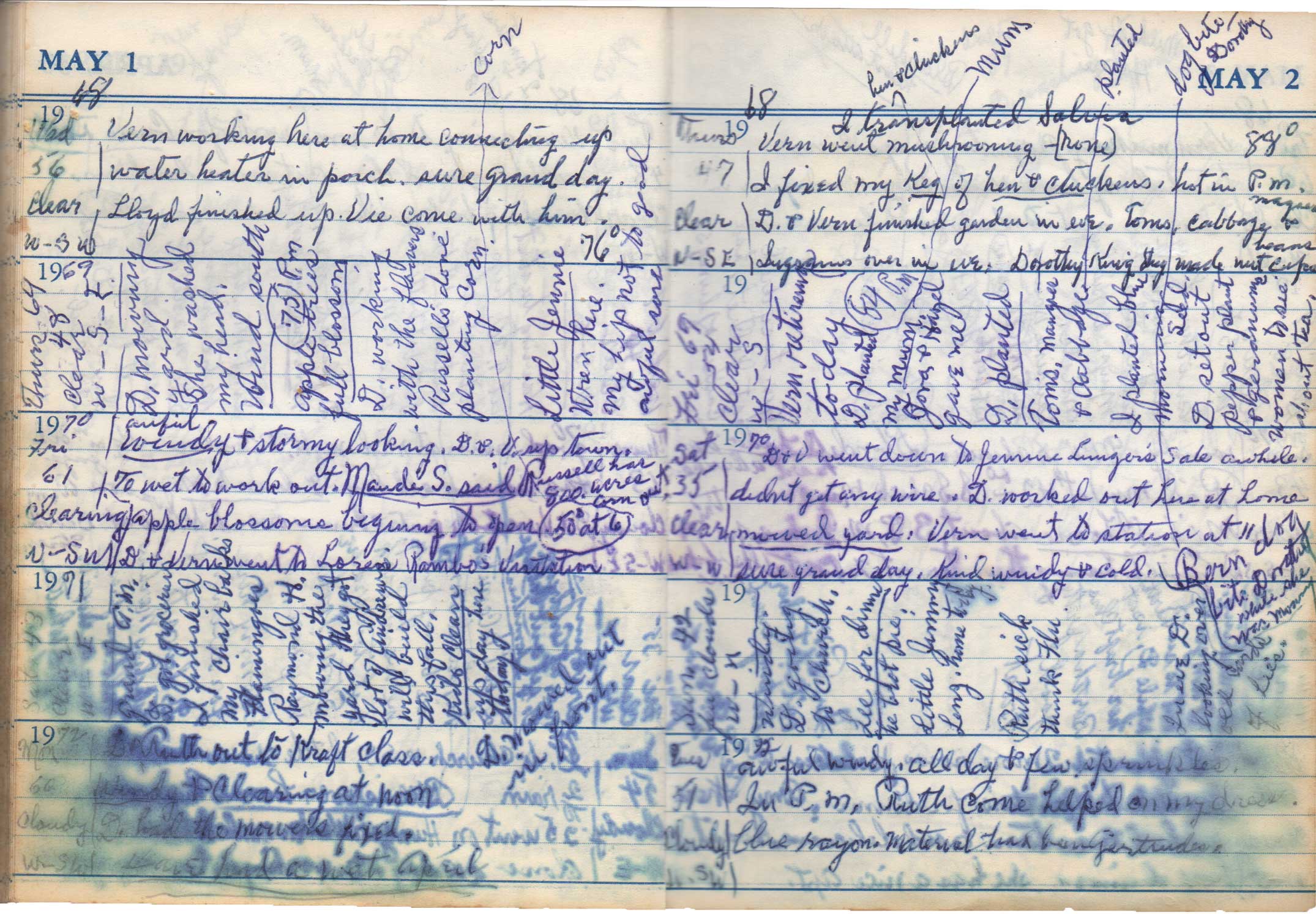The text in Aug 9—Fog is drawn from a stranger’s diary. I acquired the diary fifteen years ago, at a public estate auction. It was among the unsold items. I removed it from a box on its way to the garbage. It looks like garbage—I am surprised it made it to the auction house at all.
It is a small book, approximately the size of my hand, an inch and a quarter thick. The pages have detached from the spine and sit in a solid chunk. The binding is cracked and bandaged with brittle tape.
The diary was at some point submerged, or leaked on—the ink on the bottom third of almost every page has bled (blue, very pretty) and is mostly undecipherable. Front and back covers are pitted with mildew and dirt. The strap that fitted into a brass lock on the front is gone, but the key is sealed in a tiny envelope and tucked inside.
Whenever I handle it, some bits crumble onto my desk.
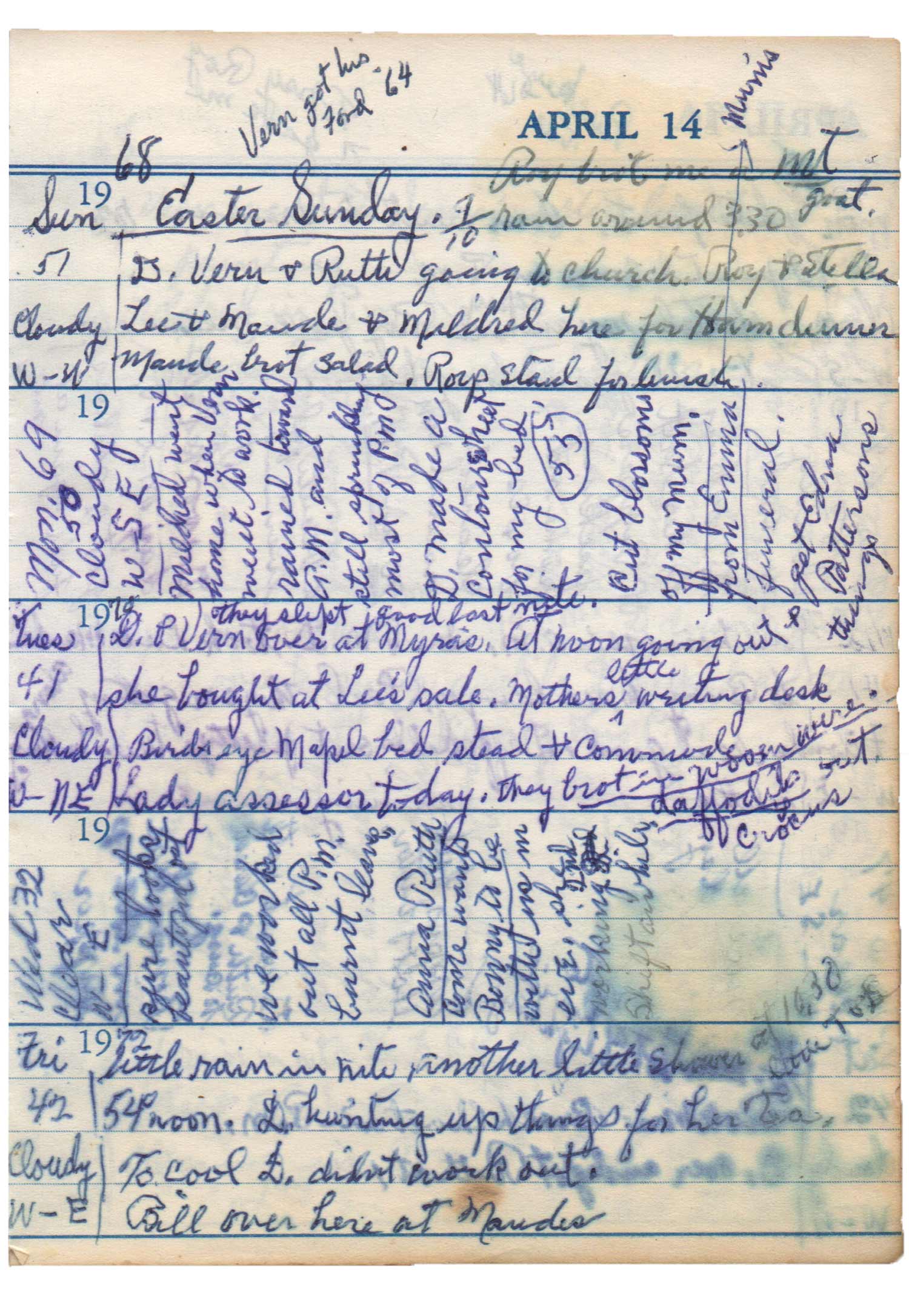
The diary was a Christmas present to the author from her daughter and son-in-law. The author wrote her full name and address on the front page. She resided in a small Illinois town. She was eighty-six years old when she began recording in it.
The diary chronicles the years 1968 through 1972. Each page is a calendar day, divided into five sections—one for that date for each of the five years. A contemporary vendor of this type of diary claims the format allows you to “travel forward and back in time.”
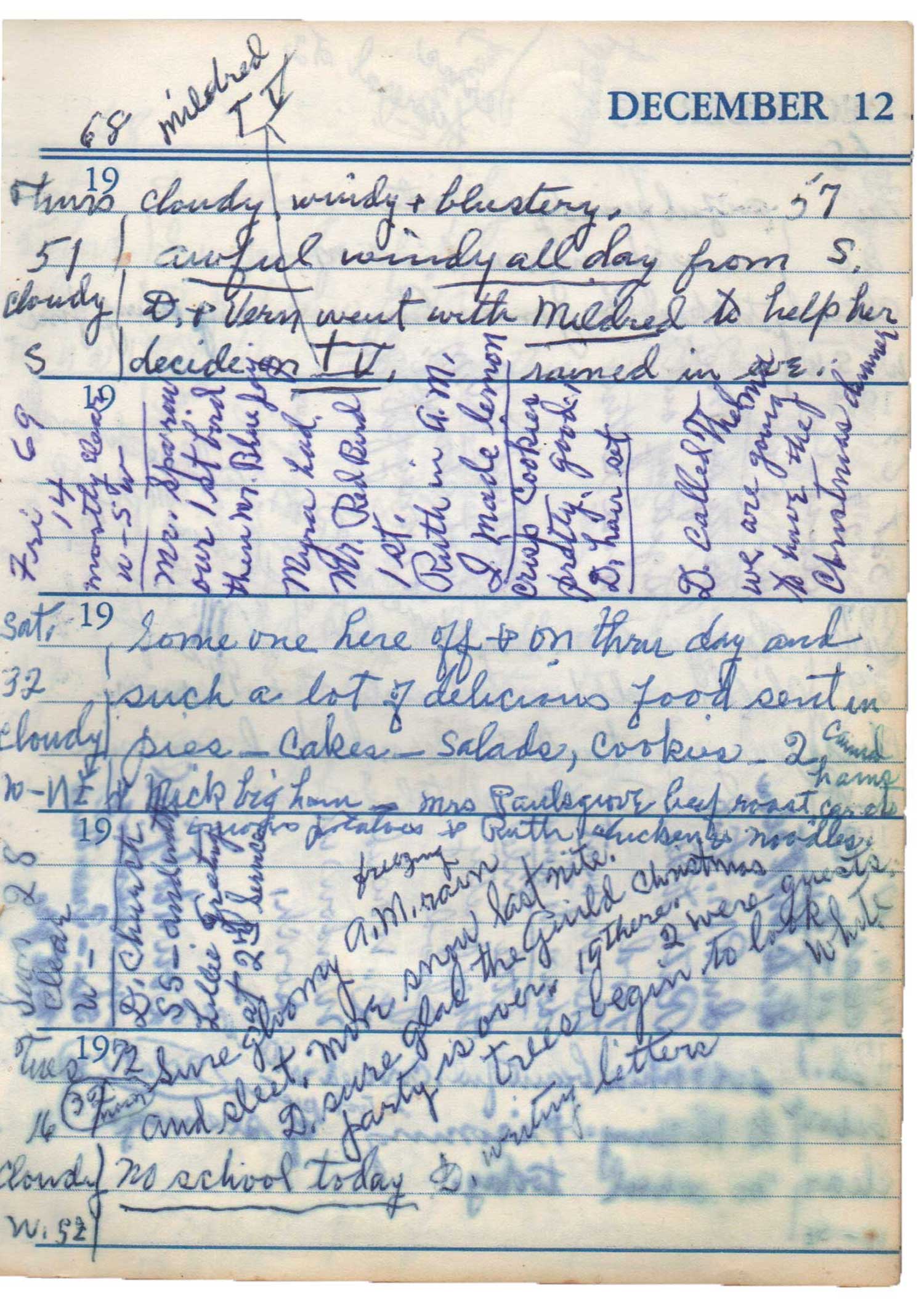
At first I loved only the physicality of the diary—the author’s cramped hand, the awkward, artful way she filled the page. I liked its miserable condition. Its position was tenuous—yet here it was. I didn’t try to read it. I kept it in a drawer. I assumed it illegible.
But then I did read it—compulsively. I hunched over it, straining my neck. I read it front to back—perhaps a dozen times by now.
As I read, I typed out the sentences that caught my attention. Then, for ten years, off and on, I played with the sentences I’d pulled. I edited, arranged, and rearranged them into the composition you find here.
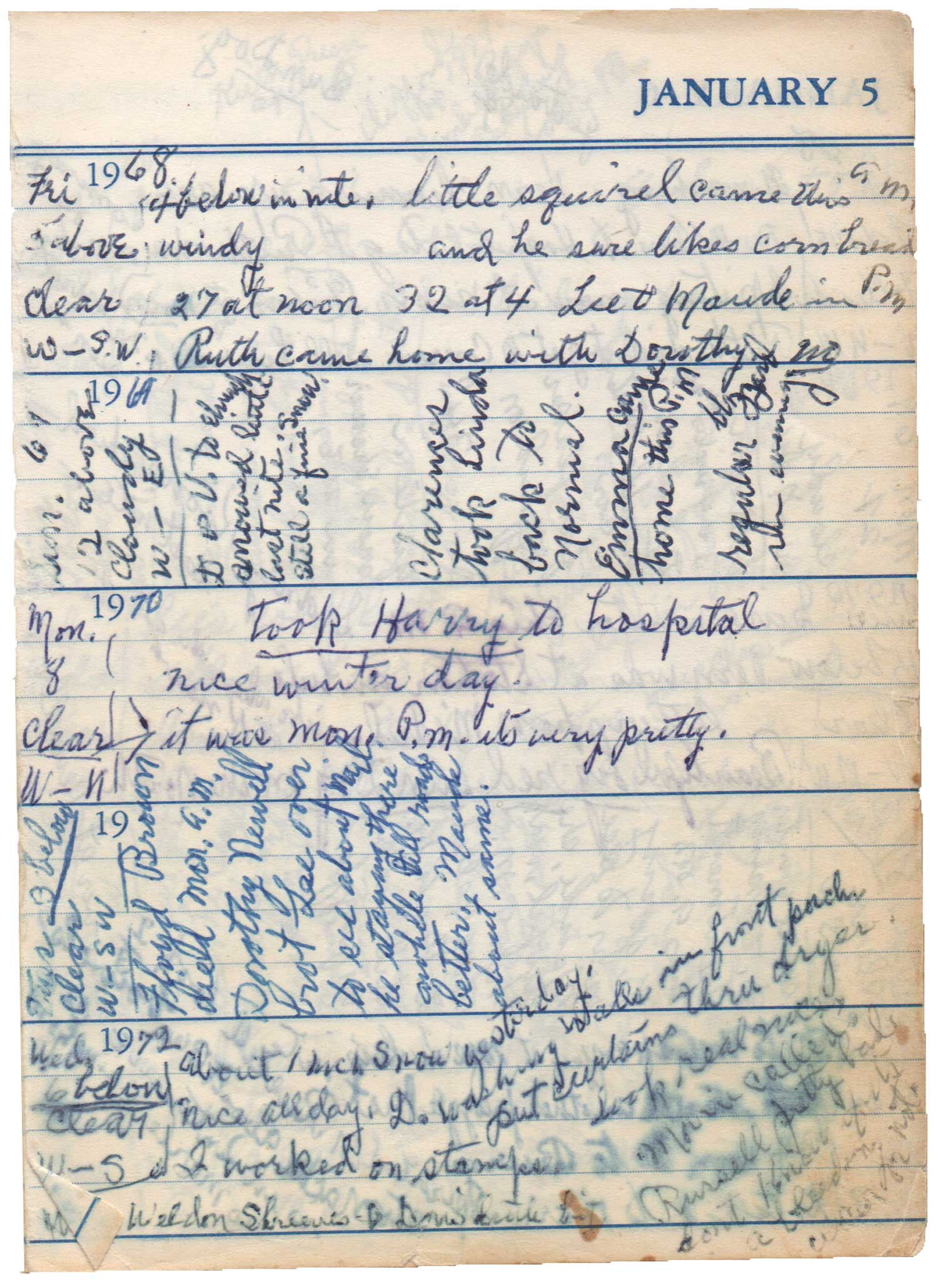
At this point—as you might expect—the diarist’s voice, her particular use of language, is firmly, intractably lodged in my head. Often I say to myself—“some hot nite” or “flowers coming fast” or “grass sure growing” or “everything loose is traveling.”
In fact, I have possessed this work so thoroughly that the diarist has ceased to be an entirely unique, autonomous other to me. I don’t picture her. I am her.
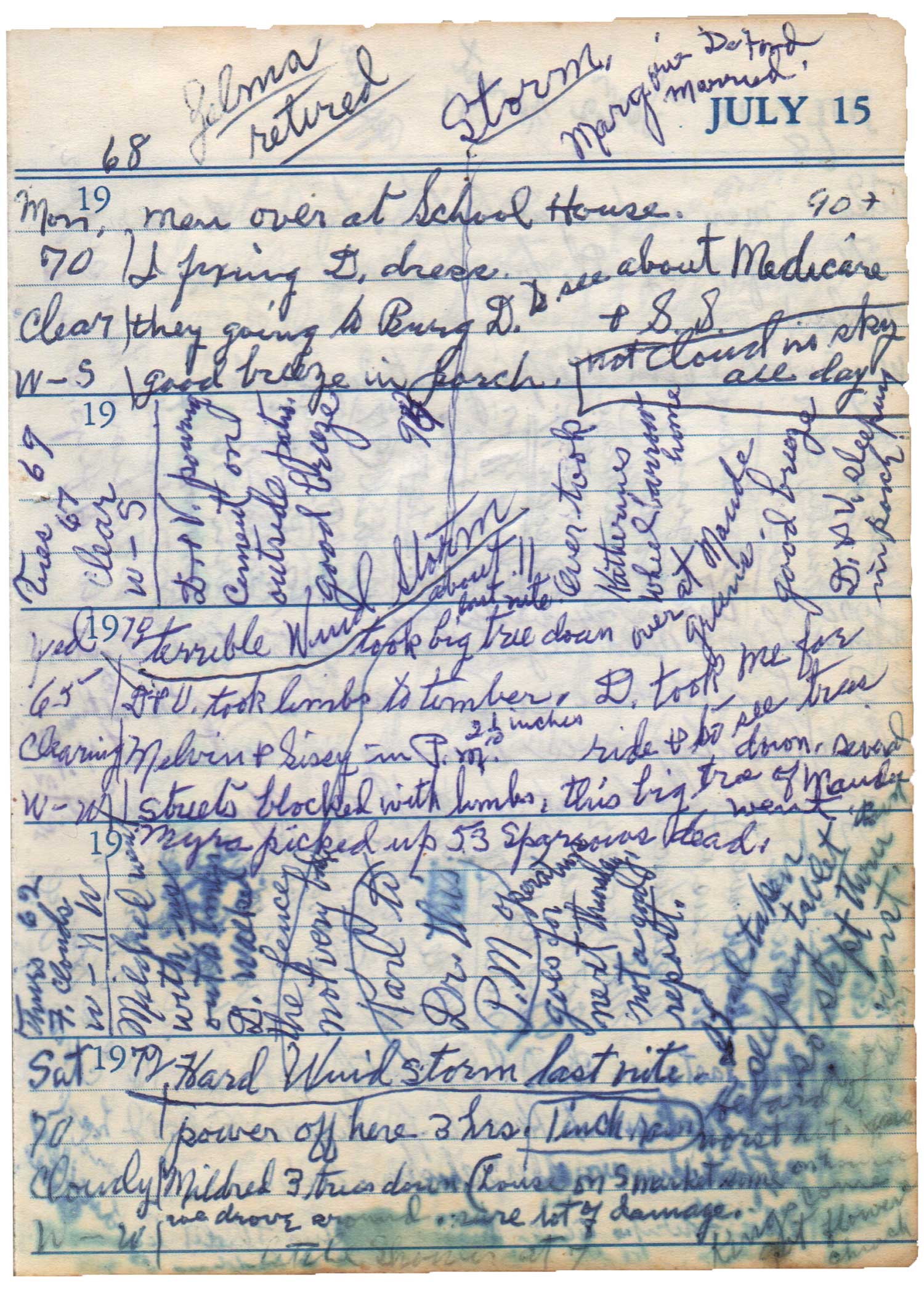
The diary has become something like kin—a relation who is also me, myself. I have at times been exasperated with it. I have wondered why I continue to return to it—year after year, draft after draft. Why does it compel me so? Isn’t it terribly banal?
Is it like a game I come back to because I’ve not mastered it?
Is it some kind of sacred text—meant for me alone?
Has it trained me—this inexhaustible textbook—how to choose, contort, order, and cut?
It still moves me, which seems unbelievable.
